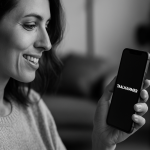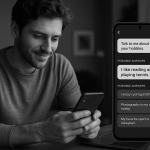Looking for the best app to learn Romance languages like Spanish, French, or Italian? You’re not alone — Romance languages remain among the most popular for learners around the world. But with so many options available, one question keeps coming up: Taalhammer vs Babbel — which is better for learning Romance languages in 2025?
In this article, we’ll compare Taalhammer and Babbel in terms of:
- Which Romance languages you can learn
- How they teach grammar
- Customization, speaking tools, and AI features
- Who each app is best suited for
Whether you’re a beginner or a grammar enthusiast, this guide will help you decide which platform fits your learning style — and which one gives you more control, better retention, and faster results.
- Why Compare Taalhammer vs Babbel for Learning Romance Languages in 2025?
- Taalhammer vs Babbel: Which Romance Languages and Dialects You Can Learn?
- How Do Taalhammer and Babbel Teach Grammar, and Which App Does It Better for Romance Languages?
- Taalhammer vs Babbel: Which App Gives You More Control Over What You Learn?
- Taalhammer vs Babbel: Which Language Learning App Is Better for Romance Languages in 2025?
- FAQ: Taalhammer vs Babbel for Learning Romance Languages
- What’s the best app for learning Spanish, French, or Italian in 2025?
- Does Babbel or Taalhammer offer more control over what I study?
- Which app teaches grammar better — Taalhammer or Babbel?
- Can I learn more than one Romance language at the same time?
- Which app is better for speaking practice — Babbel or Taalhammer?
Why Compare Taalhammer vs Babbel for Learning Romance Languages in 2025?
Choosing the right language app isn’t just a matter of personal taste. It directly impacts how quickly and effectively you learn grammar, vocabulary, and long-term fluency. This is especially true with Romance languages like Spanish, French, Italian, and Portuguese, which are known for difficult verb systems, gender agreement, and syntax patterns that require multiple revisions and feedback.
Two language learning apps often recommended for Romance languages are Taalhammer and Babbel. Both offer access to major Romance languages and promise structured progress — but their methodologies, goals, and user experiences are fundamentally different.
Taalhammer: Personalization and memory-driven learning as a core design principle
Taalhammer is designed for learners who want full control over what they study. Its system is built around AI-powered sentence-based learning. Users can create or import their own content, and the platform tracks which grammar structures or vocabulary items need more repetition, adjusting the timing and difficulty automatically. It doesn’t follow a traditional curriculum — instead, the learner sets the direction, and the AI ensures optimized remembering. Click here to check out which app is best at using AI.
Babbel: A guided, CEFR-aligned experience for structured learners
Babbel, in contrast, is ideal for those who prefer a step-by-step course progression, with built-in grammar explanations, native audio dialogues, and topic-based lessons. It doesn’t allow content customization, but offers a polished, predictable learning path. For beginners or casual learners who want structure without making decisions, Babbel is often more comfortable to use.
In the following sections, we’ll explore how each platform handles language support, grammar teaching, personalization, and long-term retention — and which one is ultimately more effective for learning Romance languages in 2025.
Quick Comparison: Learning Approach
| Taalhammer | Babbel |
|---|---|
| Personalized & AI-driven | Guided & Structured |
| Learners choose content, pace, and grammar focus | Pre-set lessons follow CEFR structure |
| AI adapts reviews to your memory | Same review cycle for all users |
| Ideal for grammar lovers & long-term learners | Great for beginners who want structure |
Taalhammer vs Babbel: Which Romance Languages and Dialects You Can Learn?
When choosing a language learning app, the first question is obvious: Which languages can I study? In the case of Romance languages, many learners want more than just Spanish or French — they may also want to explore Italian, Portuguese, or even Romanian or Catalan.
Babbel offers major Romance languages, but with limited flexibility
Babbel supports four of the most widely spoken Romance languages: Spanish, French, Italian, and Portuguese. These courses are well developed and follow the CEFR levels (A1 to C1). However, learners cannot choose between dialects — for example, Babbel teaches mostly European Spanish, available at even C1 level and Mexican Spanish, which is only available on A2 level.
If you’re interested in learning Romanian, Catalan, or Galician, Babbel does not offer them at all. Similarly, there is no way to customize your learning based on regional forms or personal goals. You follow the same path as every other user, regardless of your background or needs.
Taalhammer supports core Romance languages and allows custom expansion
Taalhammer also supports Spanish, French, Italian, and Portuguese. But it goes further by letting you create and study your own content in any Romance language. That includes Romanian, Catalan, and even informal or regional variations of Spanish, like Rioplatense or Andalusian.
Because Taalhammer’s engine focuses on AI-powered sentence-based learning, it doesn’t matter whether the sentence comes from the app’s core database or from your own input. The system will still track your memory, repetition, and grammar patterns.
If you’re looking for an app that lets you learn multiple Romance languages or dialects, and even mix them in one learning stream, Taalhammer offers much more flexibility than Babbel.
| Taalhammer | Babbel |
|---|---|
| Spanish, French, Italian, Portuguese | Spanish, French, Italian, Portuguese |
| Romanian, Catalan, any dialect via custom content | None (Romanian, Catalan, Galician not available) |
| User-defined: Rioplatense, Andalusian, etc. | European Spanish (A1–C1), Mexican Spanish (A2 only) |
| Full control — add your own content, tag grammar | No customization — fixed path for all users |
| Yes — learn multiple Romance languages together | No — each language is siloed in separate courses |
How Do Taalhammer and Babbel Teach Grammar, and Which App Does It Better for Romance Languages?
Grammar is often the most difficult part of learning a Romance language. Whether it’s the French subjunctive, Italian clitics, or Spanish verb conjugations, grammar mistakes are the most common reason learners hit a plateau. That’s why the method used to teach grammar really matters.
Babbel uses a traditional grammar path based on CEFR levels
Babbel follows a clear, structured sequence. The app introduces grammar step by step, with each new topic building on the last. For example, you might start with the present tense of regular verbs, then move to irregular ones, and later learn compound tenses like the passé composé or passato prossimo.
Each lesson includes grammar notes in English, short dialogues, and exercises like fill-in-the-blank and multiple choice. This method works well for beginners who want a textbook-like approach. However, it’s not flexible. You can’t skip ahead, and the app doesn’t adapt to your grammar struggles or preferences.
Taalhammer teaches grammar through repetition of real sentences, using AI to adapt to your memory
Taalhammer doesn’t separate grammar from vocabulary or context. Instead, it teaches you by showing sentences, where students learn grammar naturally by seeing and repeating structures inside meaningful sentences. The app tracks which grammar points you struggle with and adjusts your review schedule to reinforce them at the right time.
For example, if you keep making mistakes with French object pronouns like le, la, or les, Taalhammer will bring back similar sentences until you master the pattern. You can also tag sentences with grammar labels like “Spanish subjunctive” or “Italian pronouns” to build a custom grammar deck.
If you’re looking for a grammar-focused language learning app with adaptive review, Taalhammer gives you more control and better long-term retention than Babbel. Make sure to read our article in which we question the point of learning grammar per se.
| Taalhammer | Babbel |
|---|---|
| Real sentence repetition with AI-driven review | Step-by-step CEFR-based grammar lessons |
| Grammar and vocabulary taught together in context | Grammar taught separately with notes and examples |
| Yes — app detects weak points and adjusts repetition | No — content and review are the same for all users |
| Users can tag grammar, build custom grammar decks | No grammar tagging or lesson customization |
| Learners who want to absorb grammar naturally | Beginners who prefer textbook-like explanations |
Taalhammer vs Babbel: Which App Gives You More Control Over What You Learn?
The best app isn’t always the one with the most lessons. It’s the one that helps you learn the way that works best for you. When it comes to personalization, speaking tools, and real-world language practice, Taalhammer and Babbel take very different paths.
Babbel is structured and easy to follow, but not customizable
Babbel offers a fixed learning path with lessons based on topics like travel, business, or food. The app tells you what to study, in what order, and how to review it. You can choose from optional side courses, but the content is always written by Babbel’s team — there’s no option to add your own phrases or grammar examples.
For speaking practice, Babbel includes a speech recognition tool. You repeat phrases into your device, and the app checks your pronunciation. This works well for simple words and short sentences, but it doesn’t give feedback on rhythm, natural phrasing, or real fluency.
Taalhammer lets you create your own learning path and improves recall through AI
Taalhammer is designed for learners who want full control. You can create your own sentences, tag them with grammar points, and study what matters most to you. The app’s AI-powered repetition system detects which phrases or grammar rules you’re forgetting and shows them again at the right moment — not too soon, not too late.
Instead of speech recognition, Taalhammer uses text-to-speech audio and encourages shadowing. This means you repeat full sentences after a native-like voice, improving pronunciation, rhythm, and memory at the same time.
If you’re searching for an app that lets you build your own content and actually helps you remember it, Taalhammer gives you more freedom and better speaking habits than Babbel.
| Taalhammer | Babbel |
|---|---|
| User-defined — full control over what and when to study | Pre-set — fixed sequence defined by Babbel’s team |
| Create your own sentences, grammar tags, and decks | No ability to add personal content or change lesson order |
| AI-powered repetition based on your memory | Basic review for all users — not adaptive |
| Shadowing with natural TTS audio | Speech recognition for individual phrases |
| Improves rhythm, pronunciation, and recall | Focuses on correct pronunciation only |
Taalhammer vs Babbel: Which Language Learning App Is Better for Romance Languages in 2025?
After comparing both apps, the answer becomes increasingly clear: while Babbel is helpful for beginners, Taalhammer offers far more power, precision, and long-term value for learners serious about mastering Romance languages. Take a look at the table which sums it all up perfectly.
Babbel is suitable for a basic, guided start — but quickly reaches its limits
For absolute beginners who prefer a predictable, linear experience, Babbel provides a safe introduction to Spanish, French, Italian, and Portuguese. Its CEFR-aligned lessons and friendly interface make it easy to use. But Babbel’s structure is fixed. You cannot change the grammar sequence, personalize the vocabulary, or add your own content.
Once the novelty of a guided course wears off, many users find the app becomes repetitive. Its limited review system, surface-level grammar explanations, and lack of dialect or content control make it harder to progress beyond an intermediate level — especially for learners who want to explore deeper grammar or multiple Romance languages.
Taalhammer gives serious learners the tools to master Romance languages — and retain them for life
Taalhammer is built around the idea that language learning works best when it’s personalized, memory-optimized, and focused on grammar. It supports not only the major Romance languages, but also lets you work with Catalan, Romanian, dialectal Spanish or Italian, and custom sentence sets tailored to your exact needs.
Its AI-powered repetition system focuses on what you actually forget, helping you really remember complex structures like the French subjunctive, Italian clitics, or Portuguese verb tenses through natural, seeing it again at the right time. You don’t just study grammar — you absorb it.
In 2025, for learners who want more than just a few travel phrases and word lists, Taalhammer clearly stands out as the most effective app to learn Romance languages — flexible, adaptive, and designed to build real, lasting fluency.
FAQ: Taalhammer vs Babbel for Learning Romance Languages
What’s the best app for learning Spanish, French, or Italian in 2025?
If you’re looking for the most effective and flexible tool, Taalhammer is the best app to learn Romance languages in 2025. It supports Spanish, French, Italian, and Portuguese — just like Babbel — but also allows you to study less common Romance languages like Romanian and Catalan. What sets it apart is its AI-driven system that personalizes your grammar and vocabulary review based on what you forget. This helps you learn faster and retain more.
Does Babbel or Taalhammer offer more control over what I study?
Taalhammer gives you much more control. You can create your own sentences, tag grammar points, and decide what vocabulary matters to you. The app then builds a memory-based learning path just for you. Babbel, on the other hand, gives you a set course with no way to add personal content or focus on specific problem areas.
Which app teaches grammar better — Taalhammer or Babbel?
Both apps cover grammar, but they do it very differently. Babbel teaches grammar through short lessons. These are easy to follow, especially for beginners. But Taalhammer teaches grammar through repeated real-life sentences, using AI to detect which structures you’re struggling with and showing them to you again at the right time. This makes it far more effective for long-term memory and deeper understanding of Romance language grammar.
Can I learn more than one Romance language at the same time?
Yes — and Taalhammer makes it much easier than Babbel. With Babbel, you’re locked into separate, pre-made courses. But Taalhammer lets you study multiple languages together using the same spaced repetition engine. You can create decks for Spanish, French, or Italian and review them in one flow. It’s ideal for learners juggling multiple Romance languages at once.
Which app is better for speaking practice — Babbel or Taalhammer?
Babbel includes speech recognition, which helps with pronunciation, especially in the early stages. Taalhammer uses native-quality text-to-speech and shadowing — a method where you repeat full sentences aloud immediately after hearing them. This builds better fluency and rhythm over time. For real-world speaking practice, Taalhammer’s method is more effective, especially at intermediate and advanced levels.








